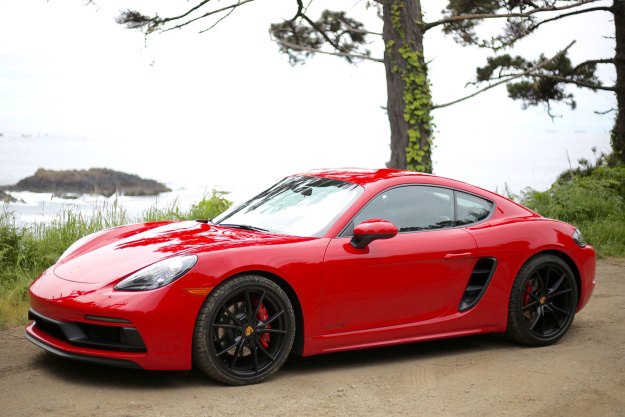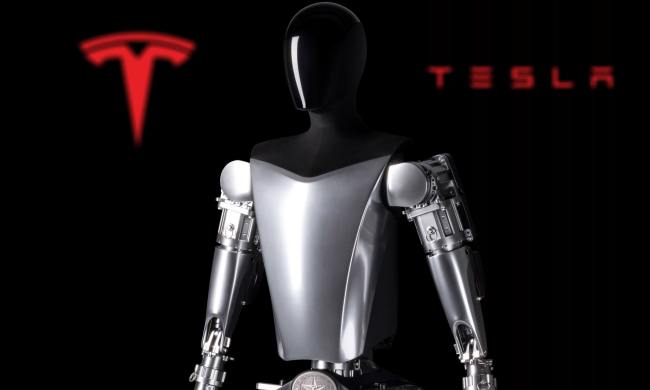
“Porsche’s new 718 Cayman and Boxster GTS are stellar products of performance engineering.”
- Blacked out exterior accents add appropriate menace
- Driving dynamics are far superior to rivals
- Both manual and PDK are phenomenal gearboxes
- Elite curb appeal for a palatable price
- Exhaust note is more like a hot hatch than a sports car
- Missing some luxury features we'd expect
Past a certain dollar figure, is there such thing as a bargain? Porsche tells us the new 718 Cayman and Boxster GTS are something of a deal. At $80,800 and $82,800, respectively, the Cayman and Boxster GTS discount their upgrades compared to an S model with the same specifications.
We don’t doubt Porsche’s math, but is the 718 GTS the right performance bundle? The name certainly has credibility, tracing its lineage back to 1964, when Porsche introduced its 904 Carrera GTS (Gran Turismo Sport) as a street legal homologation of the FIA-GT racecar. Originally, GTS signified an additional layer of comfort in race-bred sports cars, but as the automaker introduced more GTS models, it came to represent increased performance in touring vehicles.
While GTS is a mid-range ‘enthusiast special’ of Porsche’s other models, it represents the highest performance designation for the new 718 Cayman and Boxster – that is until GT4 and Spyder variants hit the market. Contending with the new GTS duo for two-door sports car market share is Audi’s TT-RS ($65,875), Jaguar’s F-Type R-Dynamic ($82,050 Coupe, $85,150 Convertible), and Chevrolet’s Corvette ($55,495 Coupe, $59,495 Convertible).
Our positive experience in the base 718 Cayman has us pretty jazzed for these headlining trims. It’s off to Napa, California, for a few hundred miles of scenic seat time.
Porsche’s 718 Cayman and Boxster feature conservatively upscale designs, while the GTS treatment is one of increased aggression. The most telling details are black accents sprinkled around each car’s exterior. A unique front fascia is matched with black housings for the bi-xenon headlights. At the rear, darkened LED taillights accompany black sport exhaust tips and a bespoke rear diffuser. Every 718 GTS also wears gloss black 20-inch Carrera S wheels wrapped in Pirelli P Zero or Michelin Pilot Sport 4S tires – sized 235 front and 265 rear.
Interior and tech
Even the standard 718 models make clear nods to Porsche’s motorsport roots, but the GTS trim enhances the sense of sportiness. In racing applications, Alcantara is applied to surfaces for improved grip (especially when wearing gloves or with perspiring hands). This same material is applied to several touch points in the GTS, including the steering wheel rim, gear shifter (manual) or selector (PDK), door panels, headliner, center console, and seat inserts. Whether customers actually track their cars or just appreciate the motorsport-derived look, Porsche is happy to oblige.
Other unique cues include GTS badging on the prominent tachometer and stitching on the seat headrests. The Sport Chrono package comes standard in the GTS, and adds a dash-mounted clock/lap timer, a smaller-diameter GT Sport steering wheel, and a four-position drive mode dial. The rest of the 718 cabin is typical Porsche fare – that is to say high quality, comfortable, and intuitive. Standard two-way electronically adjustable sport seats are both supple and supportive for a mix of driving duties, and a 5.1 cubic foot front trunk offers sufficient space for a long weekend worth of baggage.
PCM is among the most logical infotainment systems we’ve encountered.
The 718 GTS comes equipped with Porsche’s Communication Management System (PCM), a 7.0-inch center display, and a 4.6-inch digital driver display. Between the two high-resolution screens, passengers have access to navigation, entertainment, telemetry, and other settings. Apple CarPlay is available for a small premium, but Android Auto cannot be equipped. PCM’s menu structure and mix of touchscreen and physical controls is among the most logical infotainments we’ve encountered regardless of segment.
Standard convenience features include two USB ports, Bluetooth calling and audio, Sirius XM, HD Radio, and a backup camera. Two upgraded speaker systems are available from Bose and Burmeister, as is a 4G LTE Wi-Fi hotspot. Porsche also offers two driver assistance features: full-speed adaptive cruise control, and lane change assist. Some of the GTS’ rivals offer a more robust set of standard features, but none provides a more distinguished, sporty cabin.
Driving experience
There’s more to a GTS than mere aesthetics, as one look at the spec sheet or a firm stomp of the accelerator quickly reveals. To extract more performance from the 718 S’ mid-mounted 2.5-liter flat four-cylinder, Porsche designed a new intake manifold and an advanced VTG (variable turbo geometry) system. With an improved 18.1 PSI of boost from the larger diameter turbocharger (compared to 16.7 PSI in the S models), the Boxster and Cayman GTS produce 365 horsepower and either 309 or 317 pound-feet of torque depending on transmission. S models, by comparison, register 350 hp and 309 lb-ft.
Porsche offers a choice of six-speed manual or seven-speed dual-clutch (PDK) transmissions, each with its own appeal. Few gearboxes are as precise and engaging as Porsche’s standard six-speed, though the GTS’ peak performance is only accessible with the PDK. Stunningly quick shifts via the steering wheel-mounted paddles make the most of launch mode’s minimal wheel spin for a 0-60 mph romp of just 3.9 seconds. Only the all-wheel drive Audi TT-RS is quicker to 60 mph, though all of the 718 GTS’ key competitors produce more power – up to 90 additional ponies in the case of the V8-powered Corvette.
The GTS is built to whip corners into shape, plotting a tight line through Napa’s coastal bends as if by clairvoyance.
Complementing the upgraded powertrain is Porsche’s torque vectoring system, mechanical locking rear differential, adaptive suspension dampers, a lowered ride height, four-piston front brakes from the 911 Carrera, and a three-mode traction control system. The GTS is clearly built to whip corners into shape, plotting a tight line through Napa’s coastal bends as if by clairvoyance.
Four distinct drive modes re-tune the ride quality, throttle mapping, shift response, and steering for more docile or engaging driving experience. Sport mode is the standout for daily driving fun, with good pedal response and agreeable ride quality. Sport Plus is one or two ticks overly aggressive for public roads, but track enthusiasts will certainly appreciate this setting for white-knuckle maneuvers. If there’s any real letdown to the GTS driving experience, it’s the engine note. Oddly enough, the base 718’s 2.0-liter burble is more enjoyable than the 2.5-liter’s gargle – amplified by the GTS’ sport exhaust. The noise isn’t enough to disrupt the euphoria of driving the 718 GTS, but drivers might not wish to open the baffles on their two-stage exhaust.

Porsche quotes EPA estimates of 19 city, 25 highway, and 21 combined mpg for manual-equipped 718 Boxster and Cayman GTS models, which tracks with each key competitor. The available PDK gearbox improves these figures by 1 mpg across the board,
Warranty
Porsche offers a new vehicle warranty with four years or 50,000 miles of coverage. Included in the warranty is a 24-hour roadside assistance program, but unlike many of Porsche’s luxury manufacturer rivals, free scheduled maintenance is only included for the first year. Beyond then, Customers can expect to spend just over $4,600 in standard maintenance by the fourth year of ownership. On top of these expenses, unscheduled repairs will account for approximately $2,900. These figures are average for luxury sports cars. J.D. Power rates Porsche 5/5 for both dependability and overall quality, and owners consistently express positive experiences via online forums.
How DT would configure this car
Our ideal Porsche 718 GTS would either be the Cayman in Guards Red with a six-speed manual or the Boxster in Carrera White ($650) with a red fabric top and seven-speed PDK ($3,730). Here are the boxes we’d check for the Cayman: auto-dimming mirrors with rain sensing ($700), seat belts in red ($360) dual-zone automatic climate control ($770), seat heating ($530), Bose surround sound system ($990), and Apple CarPlay ($360). Our perfect Cayman GTS sets us back $85,460 (including a $1,050 destination charge). To the Boxster, we’d add the same equipment, plus adaptive cruise control ($1,670), which is only available on PDK-equipped models. Our perfect Boxster GTS is quite a bit pricier at $93,250 (including destination).
Conclusion
Somehow, ‘bargain’ doesn’t seem such a farcical term for Porsche’s new 718 Cayman and Boxster GTS models. It isn’t the one-to-one part savings that justify the premium, however. With possible exception for the discontinued GT4, these are the finest versions of the Cayman/Boxster nameplate yet. Outside Porsche’s own stable, the 718 GTS duo out-handle and their competitors and, better still, they’re just more fun.









